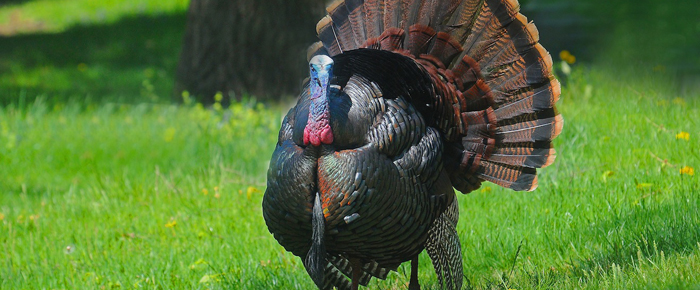
By Haddon Libby
As you gather with friends and family for the Thanksgiving holiday, I want to arm you with information that you can use to distract your favorite aunt or uncle and keep them from retelling that story that they have been telling since you were at the kid’s table.
As turkeys are indigenous to North America and Mexico, how did they come to be called turkeys? After all, the Aztecs who domesticated the turkey nearly 3,000 years ago, called them guajolote (wueh-xōlō-tl).
The answer goes back to the discovery of the New World (that’s us) nearly 600 years ago. During Hernan Cortez’ exploration of Mexico in 1519, his men found and ate a wild fowl that looked like one found in Guinea, West Africa. Cortez’ men thus referred to this bird as a Gunea fowl and brought it home with them.
Within ten years, this delicacy found its way to England via Turkish merchants. As Englanders thought this bird came from Turkey, they called it a Turkey bird which was later shortened to turkey. Within fifty years, turkeys were a staple on English tables and their Christmas dinners.
In an oddity of language, English speakers called the guajolote a turkey while the Portuguese called them Perus and Greeks referred to them ‘French birds’…probably because of the beautiful plumage (a French word).
Benjamin Franklin wanted the turkey to be the national bird instead of the Bald Eagle as he felt the eagle had a “bad character” and was a “coward”. Franklin wrote to his daughter saying that the turkey was “a much more respectable Bird and a true Native of America” while calling it “a little vain and silly” yet “a Bird of Courage, (that) would not hesitate to attack the British Guards invad(ing) his Farm Yard.” Sounds pretty American, no?
I should note that the wild turkey is vastly different than their domesticated counterpart. Wild turkeys sleep in trees to avoid predators and can run at speeds of up to 25 mph while flying for short distances at speeds up to 55 mph. Despite these talents, turkeys do not see humans as predators. This lack of fear towards us led to the near extinction of the species in the early 1900s when overhunting meant that only 30,000 remained in North America. Today, nearly 7 million live in the wild.
In the mating process, hens (females) find gobblers (males) with longer snoods more attractive than those with shorter snoods. A snood is that long, red ugly thing on their faces. As both gobblers and hens have snoods, a non-turkey can only differentiate the genders by looking at their poop.
Seriously.
Gobbler poop is in a spiral while hens make a ‘J’ shape. Why? I do not know.
I do know that a baby turkey is called a poult while a young male turkey is a jake and the female is a jenny. A mature male turkey is called a gobbler, the female is a hen with a bunch called a rafter. Turkeys are communal animals that like to travel in rafters.
Assuming that you show off this new found knowledge of your main course this Thanksgiving, someone is certain to bring up the ‘fact’ that turkeys are so stupid that they drown if left outside in the rain.
This is false.
While farm-raised turkeys have been heavily inbred like British royalty and are not the smartest of birds, they are not that dumb. Given that these birds are weak, fat and slow like a sub-section of Americans who rely on fast food, soda and automatic remotes to survive, they panic when confronted with something unusual such as rain. As such, these turkeys try and escape the rain causing then to trample and suffocate each other like a gaggle of Black Friday shoppers at midnight.
Haddon Libby is Managing Partner of Winslow Drake, an investment advisory firm and can be reached at hlibby@winslowdrake.com.








































